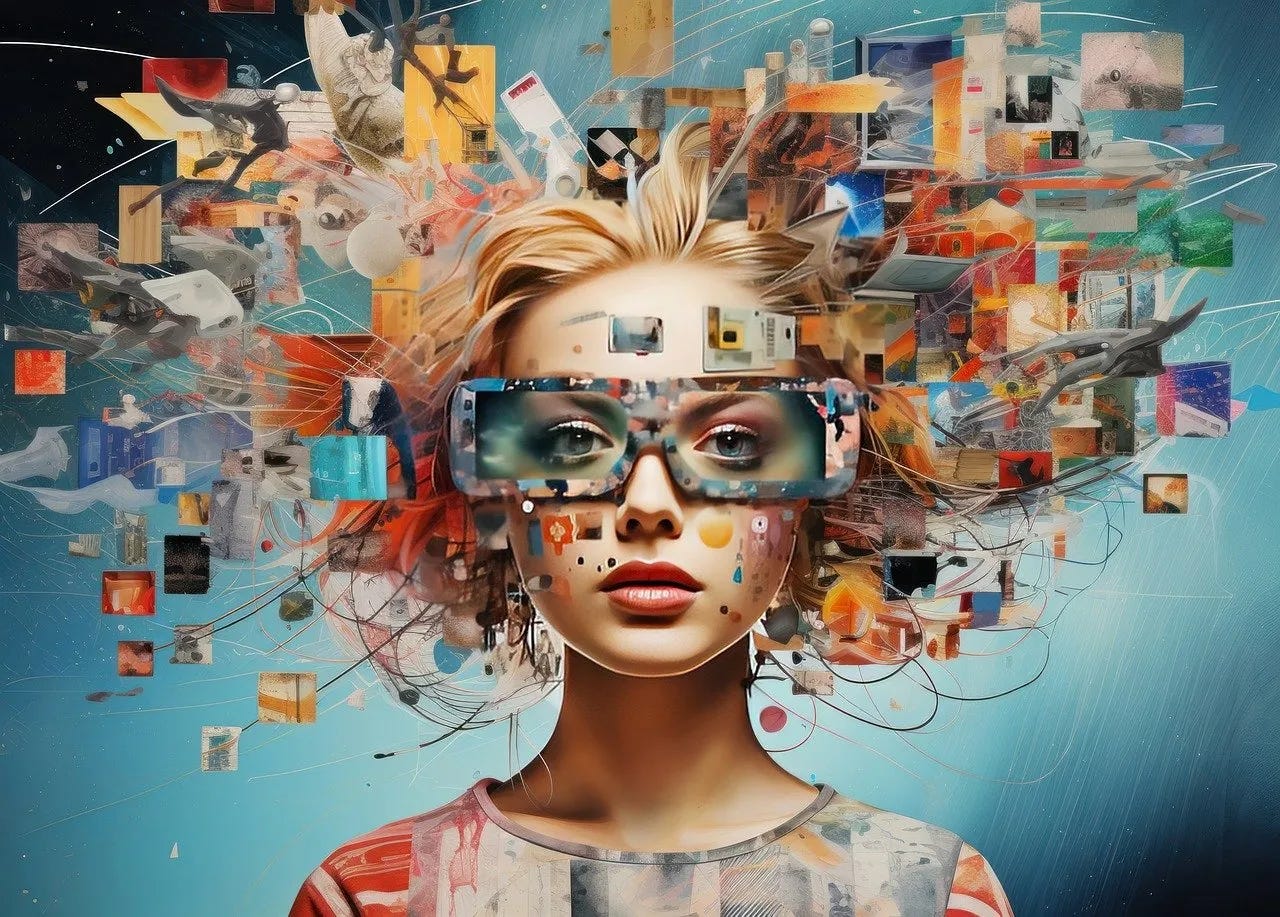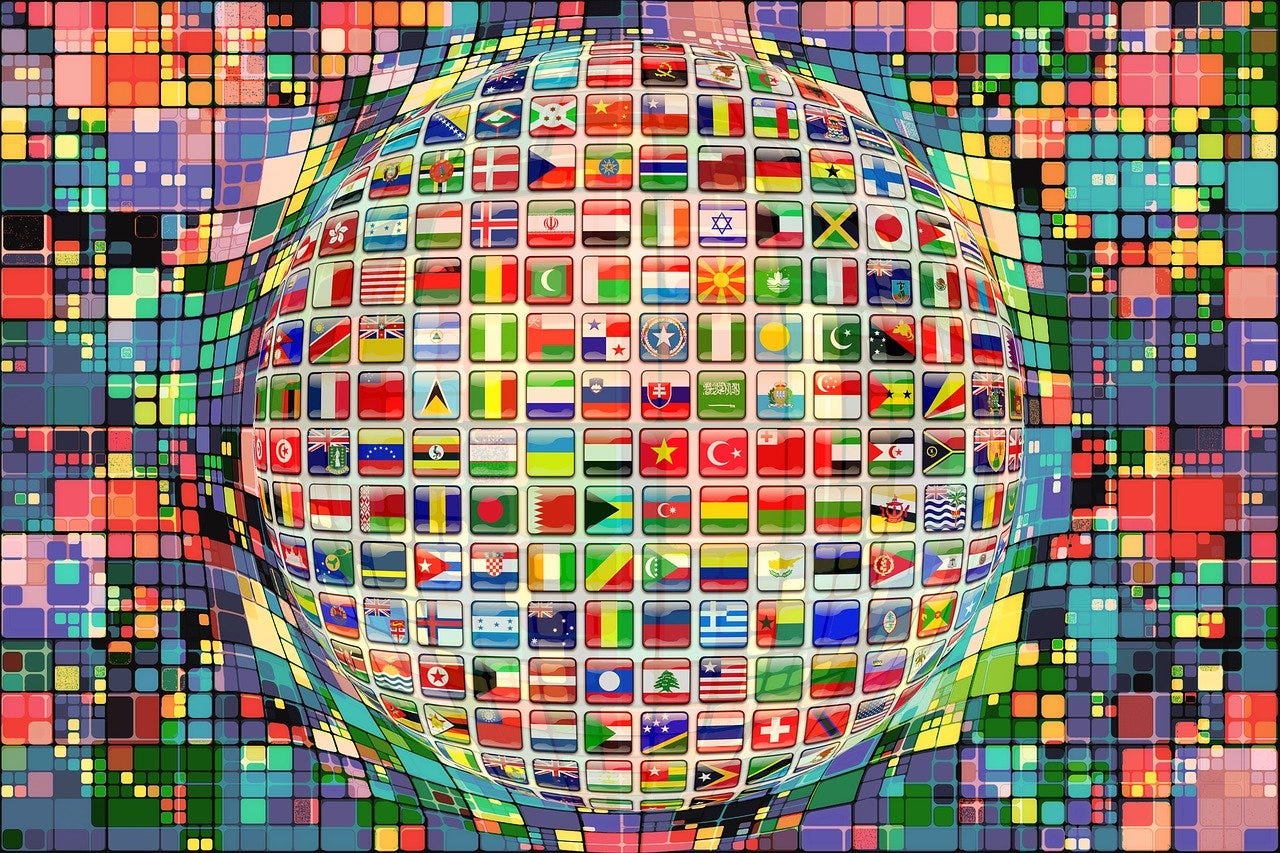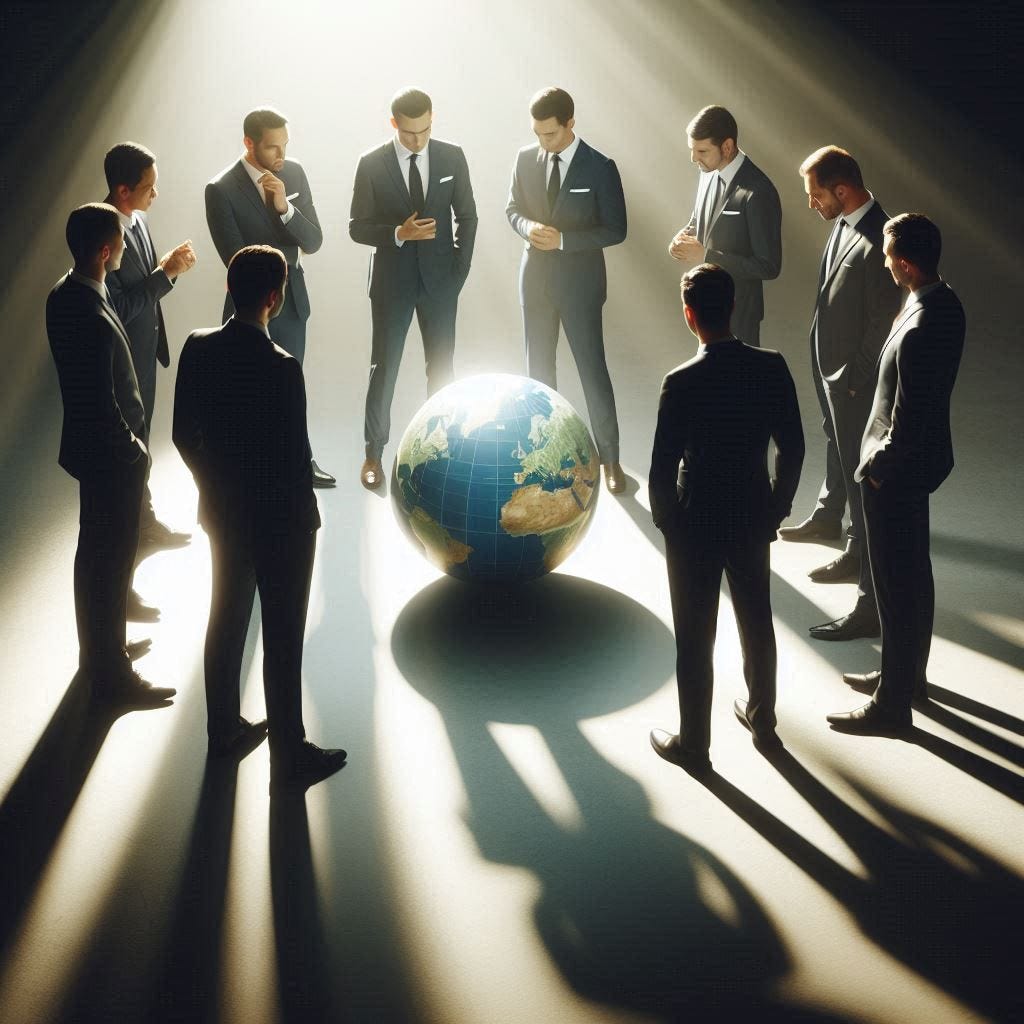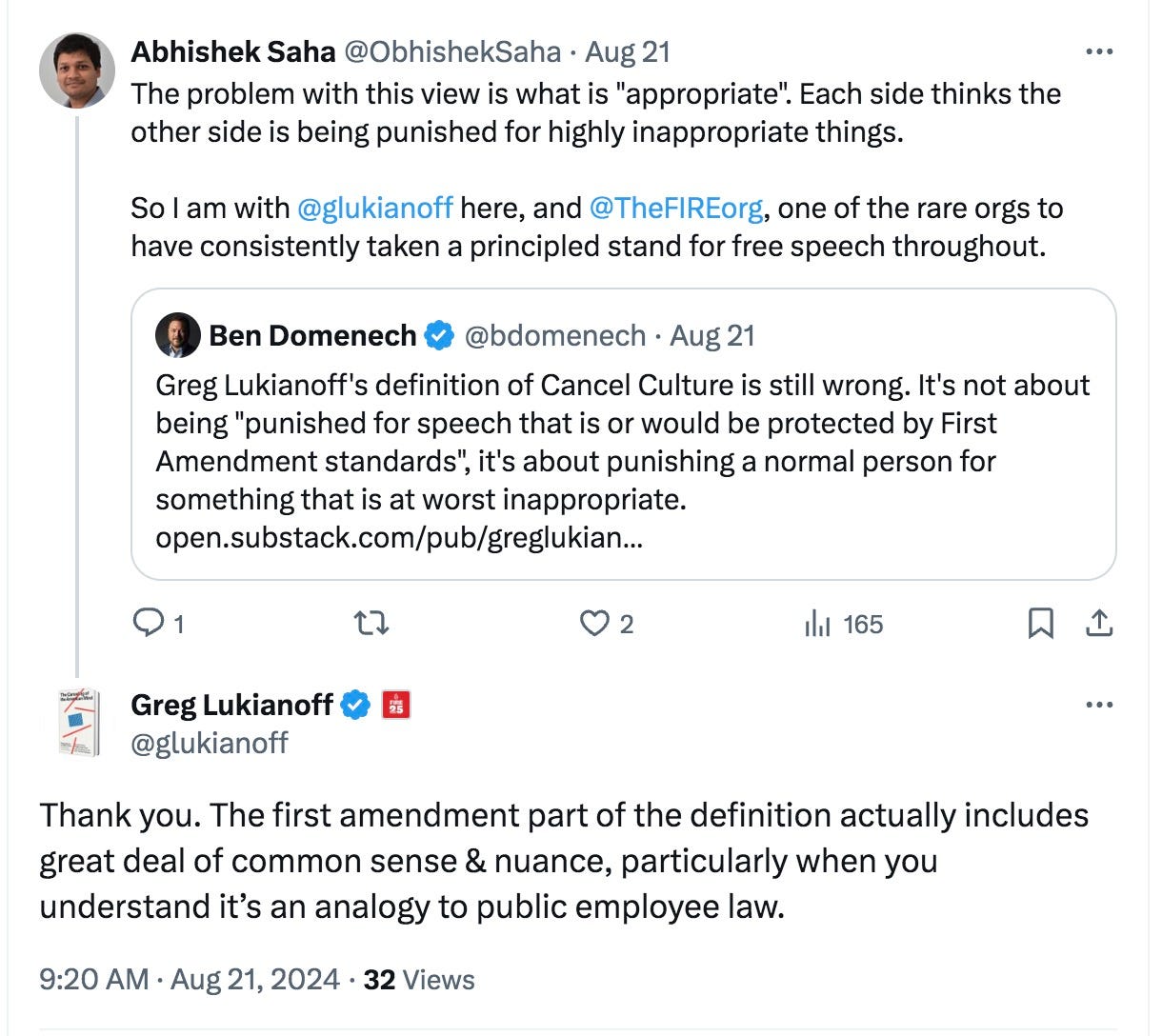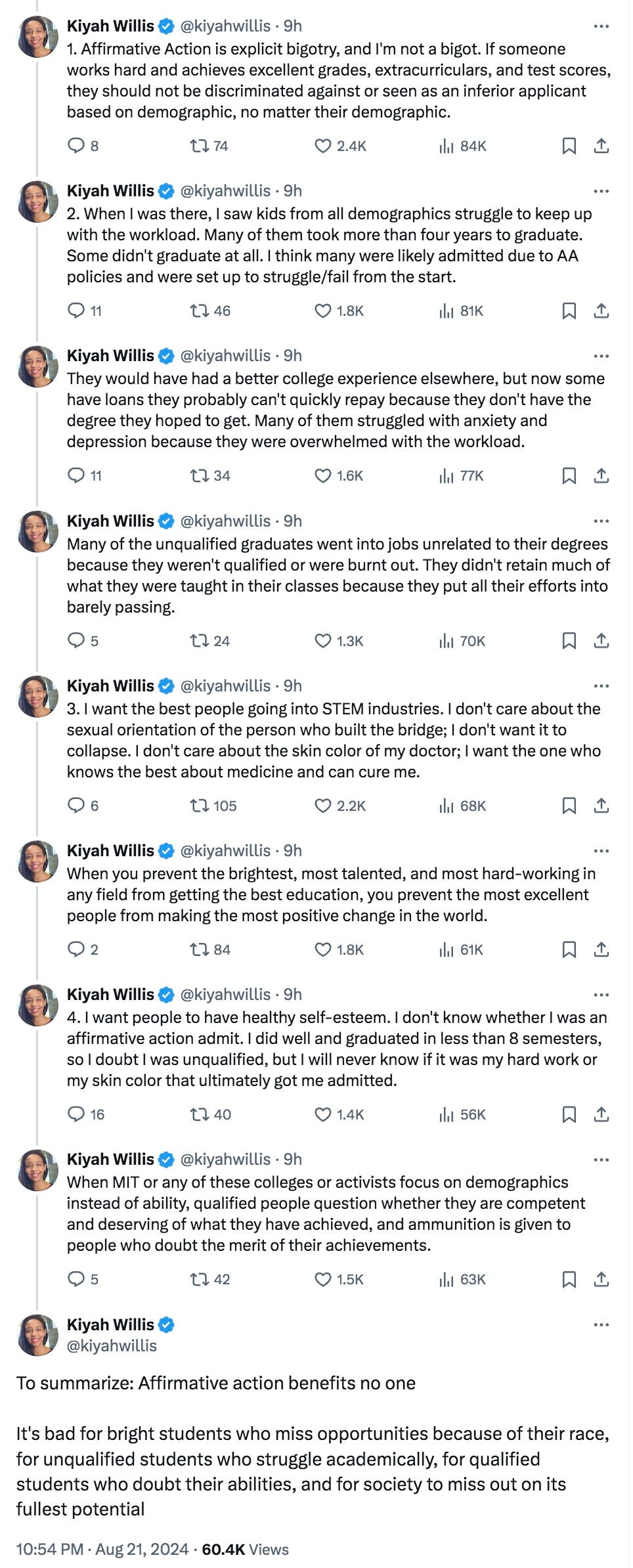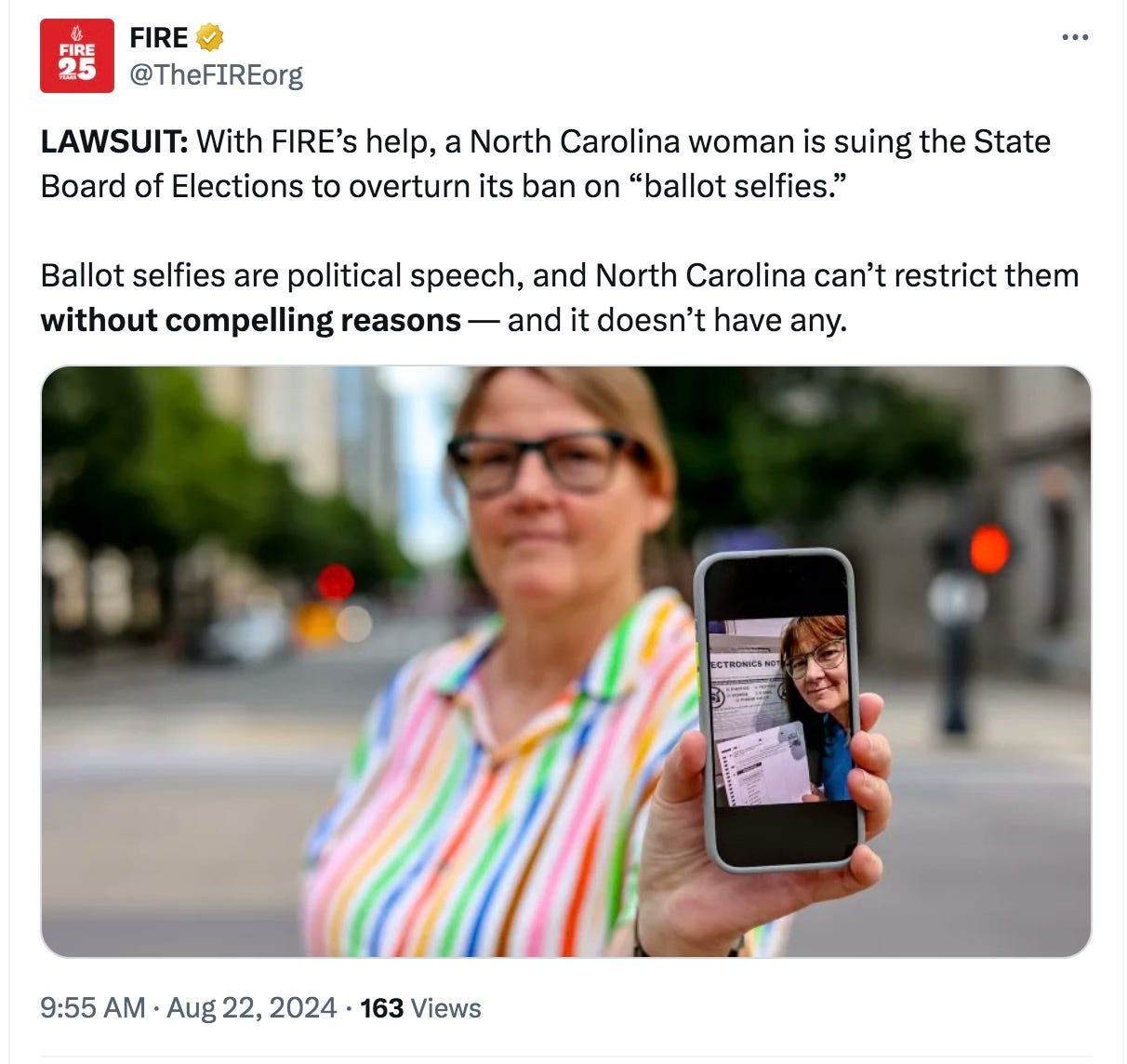E-Pluribus | August 22, 2024
A media literacy survival guide; the new order, same as of the old order; and, on the other hand, perhaps a real new order after all.
A round-up of the latest and best musings on the rise of illiberalism in the public discourse:
Andrey Mir: The Seven Essential Truths of Digital Media Literacy
One of yesterday’s round-up items dealt with materials used in American schools to promote “media literacy.” At Discourse Magazine, Andrey Mir breaks down the concept and spells out seven indispensable rules to survive in the digital media age. (A short excerpt follows, but click through for all seven.)
The notion of media literacy emerged comparatively recently, in the 1990s, after society realized the role of media in public and personal life. The term combined the concept of media developed in communication studies courses since the 1960s and the idea of literacy—the skill to write and read, valued by humans for millennia.
This legacy of reading affected the concept: Media literacy has been seen as teaching the skills of understanding the true meaning behind the words, be that the words in newspapers, TV, ads or, lately, on social media. In the meantime, media have developed from being mere tools to becoming a virtual environment—no longer just enabling reading news or watching movies, but encompassing many of our activities. As a result, the old concept of media literacy is becoming obsolete.
Reading used to occupy one to two hours of an individual’s day on average, and television, up to four hours. Now, media consumption takes up 12 hours per day. Indeed, for the majority of modern urbanites, media consumption is a daylong activity that has merged with all other activities, including work, education, socialization and entertainment. Media literacy should evolve accordingly—not as an instruction manual for the better use of some technologies, but as a survival guide.
Here are seven hard-and-fast rules of this new media literacy for the digital age:
1. Media Literacy Is Cooperation With the Inevitable
Any medium, when used by a person, is a mere tool. But when used by many, a medium turns into a force that can reshape the environment. For example, a fence used by an individual is a technology that protects the owner’s yard or harvest. But when fences become more widely used, they turn into an environmental force that reshapes a nomadic culture into a sedentary and eventually urban one, affecting landscape and lifestyle.
Increasingly, we sense our environment through our media. Modern urban dwellers do not experience much of the natural environment directly. While mediating our experience with the environment, the media themselves become the environment.
[. . .]
2. Media Literacy Is Internet Hygiene
The myth of the internet as a giant dump is only half right. It is a dump in the sense that everybody dumps their stuff there. However, far from everything gets delivered to and consumed by the end user. In reality, three thick layers of filters sift internet content and efficiently protect us from internet rubbish: personal settings, the viral editor and relevance algorithms.
With personal settings—such as adding a bookmark or a friend—users claim their digital territory and make it a home place with familiar routes and people. Since these routes and people have been personally picked and tested, they create highly reliable digital surroundings for each user.
Read the whole thing.
Zak Schneider: The Return of History: Liberal Values and Global Realities
“The more things change, the more they stay the same” is as clichéd as it gets, but its staying power as a cliché is a testament to its accuracy. Predictions of a new world order and the end of history keep running smack into reality. At Quillette, Zak Schneider argues that a clear-eyed view of the weaknesses of liberal democracy are necessary for its preservation as older and more entrenched authoritarian ideas and forms of governance continually try to make a comeback.
Rather than people competing in conquest and blood, as was the case for nearly all of human history, postwar liberal democracies relied upon consent and converging economic incentives to a greater degree than at any previous time. In this new world, it was taken for granted that liberal values would appeal to anyone given the choice, and reorient people towards economic interdependence and international cooperation. Western societies were free and prosperous, so after the Cold War, many Western commentators and analysts naturally assumed that those newly liberated from tyranny would want to emulate them.
The time I spent living and working in a small Baltic country bordered by an aggressively imperial neighbour forced me to reassess the assumptions with which I was raised. Lithuanians understand that the default state of human beings is not cooperation and humanist values. They were therefore not surprised that, after the Cold War, some actors continued to defy economic self-interest in the name of ideology and festering resentment, bucking the trend of liberalisation.
A failure to appreciate this reality is where well-intentioned liberals like me went wrong.
[. . .]
Many liberals, especially the left-of-centre kind, have mistakenly assumed that the West is the preeminent cause of international conflict, and that pacifism (or at least non-interference) will bring about an egalitarian world governed by universal values. Even after Russia’s full invasion of Ukraine in 2022, members of the progressive caucus in the US House of Representatives penned a now-retracted letter to President Biden encouraging his administration to push for a premature diplomatic resolution to the conflict. Despite the menacing belligerence of Russian lawlessness and aggression, the letter’s signatories urged Biden to “[redouble] efforts to seek a realistic framework for a ceasefire.”
[. . .]
For a short time, Russia was a shining example of the peaceful end of ideological conflict after the fall of the Soviet Union. But it soon became a case study in how naive Westerners misjudged human motivations in the post-1989 world. Boris Nemtsov, an opposition leader callously murdered in downtown Moscow after he expressed his opposition to the first Russian invasion of Ukraine in 2014, explained how the Russian mentality differed to that of other Westerners. “There’s much less of this autocracy, sycophancy, and servility in [the West] than in [Russia].”
[. . .]
A post-Cold War era that lacked alternative ideologies made the malign aims of enemies almost incomprehensible to Western liberals. And as Russia deepened its connections with the Western world economically, it accelerated its distance culturally. Its cynical, revanchist, and totalitarian tendencies boiled over with the unprovoked war of aggression against Ukraine in early 2022. As a paper published by the Institute for the Study of War put it:
The United States values peace, life, American interests, freedom of debate, and is trying to act responsibly with the power it wields. These are virtues, not weaknesses. They set us apart from Russia. Russia nevertheless uses these concepts against us in its way of war, as discussed throughout this paper. The Western way of life also prevents us from grasping the full scale of what Russia is. Russia being mostly content with killing and wounding over 300,000 of its own citizens to conquer a country that did not pose a military threat is a reality unimaginable in a Western country.
To deny that this represents something fundamentally different from American culture—even at its worst—is a distortion of reality. It ought to have been obvious that a nation psychologically gutted by generations of tyranny was going to have difficulty adopting humanist pacifism in less than a generation.
Read it all.
Travis Aaroe: Great power politics is an illusion
In a similar vein as the above item, Travis Aaroe at UnHerd recalls the feckless League of Nations, that, despite its shortcomings, has continued to return in other forms over the intervening decades. However, Aaroe argues that internationalism now really is the center to which the world is being drawn. While some areas of the world may be taking two steps back, the world as a whole is moving three forward towards an international liberal paradigm.
Everyone of a certain age who passed through British secondary education will have spent a few months learning about the League of Nations, which, to my knowledge, is not a subject of academic study anywhere else. Created by the Treaty of Versailles in 1919, the League was a global quasi-government with an expansive brief to abolish war and poverty worldwide. To read about its history is to follow it from one bruising failure to the next as it sought, inter alia, to outlaw the weapons of offensive war, set international standards of safety in the workplace, and constrain Mussolini on the world stage.
Here was the essential problem: even with the best will in the world, the League had no power to enforce any of its edicts. For this it had to rely on Britain and France, who were notorious flakes. The United States never even joined. And so it went on. The General Secretariat would pronounce, the Permanent Court of International Justice would rule, the levers would be pulled, nothing would happen. None of their high ideals were able to survive first contact with reality — that is to say, state expediency and national egoism. Whenever it counted the powers would look to their own alliances, their own security. Mussolini was left to annex Abyssinia in 1936 despite the League’s protests, because Britain and France were trying to court him as an ally; Japan was allowed to overrun Manchuria for similar reasons. It all seemed to carry a brute lesson: whatever the merits of internationalism and international law, the facts of life ran against them.
Why does English schooling fixate so much on the League, this odd sideshow? A corrective to teen idealism, maybe. These events, as told, seemed to be a mini fable in how the high ideas can’t compete against ordinary selfishness. It certainly had its appeal for teenage me: a smirker, an online troll.
But as a story this was over-keen and over-cynical. Too cynical, because it always underpriced the power of these ideas. “Why can’t we all just get along”, or, latterly, “global problems require global solutions” — these are powerful notions, at least among the very powerful. The armies that conquered Europe in the middle of the Forties were technically those of the United Nations, marching under its own banner of war: the “Honour Flag” — this just 10 years after the League of Nations was pronounced a dead letter. Had F.D.R. lived a little longer, something approaching a world state under the aegis of the UN would have resulted, with the planet governed as a kind of American-Soviet condominium — even Wendall Wilkie, his Republican rival, called for such a course. A lunatic idea, but not one that school-of-hard-knocks international realism can really assimilate.
Too cynical then, and too cynical now. Over the past 10 years almost everyone has again been announcing the decline of liberal international norms and the return of the nation state. Terrorism, strongmanism, populism, migration, and global diseases would force some collision with reality, the old niceties would be forgotten, and we would then revert to a harder and simpler form of rule under sovereign nations. What would this entail? Nearly every literary or political weekly at one point carried the front piece of Thomas Hobbes’ Leviathan as its cover. Even the vogue for the term “geopolitics” spoke to the new mood: a politics founded in expediency and the facts of life, not liberal ideas.
But nothing of the sort has happened. Whatever factors might be making the case for the nation state anew, the real story of the past decade has been a huge growth in the scope and depth of international law and obligation. These are advancing over the developed world much faster than they’re receding elsewhere.
Read it all here.
Around Twitter (X)
Ben Domenech takes issue with Greg Lukianoff's definition of cancel culture, but Lukianoff finds some support from Abhishek Saha.
Here’s a former MIT student responding to a report finding that MIT had a 13% black undergraduate incoming population last year compared to 5% today.
And finally, The Foundation for Individual Rights & Expression may have gone too far this time… who could possibly oppose a selfie ban?!




